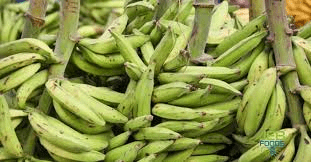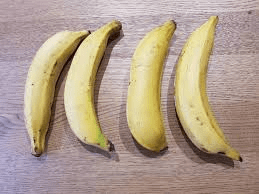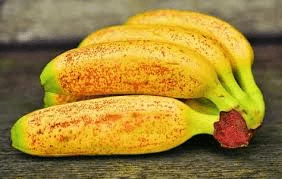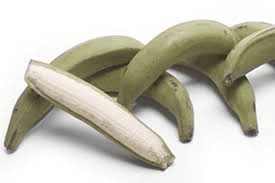The flesh of a plantain, often referred to simply as the fruit, is a versatile and nutritious component valued for its culinary uses and health benefits. Unlike bananas, plantains are typically larger and starchier, with a thicker skin that requires cooking to be palatable.
Plantain flesh varies in texture and flavor depending on its ripeness. Green plantains, which are harvested early, are firm, starchy, and less sweet. They are commonly used in savory dishes and snacks such as tostones or plantain chips. These dishes are prepared by slicing the plantain, frying or baking the pieces until crisp, and then seasoning them with salt or spices.
As plantains ripen, their flesh transitions from green to yellow and eventually black. Yellow plantains are softer, sweeter, and easier to digest than green ones. They can be baked, boiled, grilled, or fried to create a variety of dishes ranging from sweet plantain slices to hearty stews and desserts. In Caribbean and Latin American cuisines, ripe plantains are often fried to caramelized perfection, creating dishes like maduros or plátanos fritos.
Nutritionally, plantain flesh is rich in complex carbohydrates, which provide sustained energy. It is also a good source of dietary fiber, aiding in digestion and promoting a feeling of fullness. Plantains contain essential vitamins and minerals such as vitamin C, vitamin A, potassium, and magnesium. Vitamin C boosts the immune system, while vitamin A supports vision and skin health. Potassium helps regulate blood pressure, and magnesium is essential for muscle and nerve function.
Culturally, plantain flesh plays a significant role in many cuisines around the world, particularly in tropical regions where plantains are a staple food. Its adaptability in cooking allows for a wide range of culinary creations, from savory main courses to sweet desserts. Plantains are often featured in traditional dishes that reflect the rich culinary heritage of their regions, showcasing their versatility and nutritional benefits.
In conclusion, plantain flesh is a nutritious and versatile ingredient with diverse culinary applications. Whether enjoyed green, yellow, or ripe, plantains offer a range of flavors and textures that complement a variety of dishes. Their nutritional value, combined with their cultural significance, makes plantain flesh a valuable and cherished component of global cuisine.
The Economic Importance and Uses of Plantain Flesh

1. Staple Food: Plantain flesh is a staple food in many tropical regions, providing a significant source of carbohydrates and nutrients in diets.
2. Culinary Use: Plantains are versatile in cooking, used in dishes such as fried plantains, plantain fufu, and plantain porridge, enriching cultural cuisines.
3. Snack Foods: Fried plantains and plantain chips are popular snacks globally, offering a tasty and nutritious alternative to potato chips.
4. Dietary Fiber Source: Plantain flesh is rich in dietary fiber, promoting digestive health and providing a feeling of fullness.
5. Nutritional Supplements: Dried plantain flesh is processed into flour or flakes, used in baking and cooking to enhance nutritional content.
6. Baby Food: Pureed plantains are used in baby foods for their gentle texture and nutritional benefits, aiding in infant development.
7. Fermented Products: Plantains are fermented to produce traditional foods like boli (grilled plantains) and matoke (steamed plantains), enjoyed in various cultures.
8. Alcohol Production: Plantains can be fermented to produce alcoholic beverages such as banana beer, contributing to local economies.
9. Industrial Uses: Plantain starch extracted from the flesh is used in industrial applications such as food processing and textile manufacturing.
10. Cosmetic Industry: Extracts from plantain flesh are used in skincare products for their moisturizing and anti-inflammatory properties.
11. Animal Feed: Overripe plantain flesh is used as a nutritious feed for livestock, reducing food waste and supporting animal health.
12. Biodegradable Products: Plantain fibers from the flesh are used to produce biodegradable packaging materials, reducing environmental impact.
13. Pharmaceutical Industry: Plantain extracts are used in pharmaceutical preparations for their medicinal properties, including anti-inflammatory and antioxidant effects.
14. Cultural Significance: Plantains hold cultural significance in many regions, used in traditional ceremonies and celebrations.
15. Food Industry Ingredients: Plantain flesh is used as a base ingredient in various processed foods, adding flavor and nutritional value.
16. Green Manure: Plantain plant residues from the flesh are used as green manure to improve soil fertility and structure.
17. Plant-Based Diets: Plantains are a key ingredient in plant-based diets, offering a versatile and nutritious food source.
18. Export Commodity: Plantains are a significant export commodity for tropical countries, contributing to their agricultural economies.
Read Also: Best Number of Ruminant Animals per Housing Unit for Fattening
The Products and By-products That Can Be Derived From Plantain Flesh

1. Plantain Flour: Made by drying and grinding plantain flesh, used in baking and cooking as a gluten-free alternative.
2. Plantain Chips: Sliced and fried plantains, popular as a snack food.
3. Pureed Plantains: Used in baby foods, sauces, and desserts for added nutrition and flavor.
4. Plantain Wine: Alcoholic beverage made from fermented plantain juice.
5. Plantain Beer: Traditional beer made from fermented plantains, enjoyed in various cultures.
6. Plantain Starch: Extracted from the flesh and used as a thickener in food processing.
7. Plantain Fiber: Used in making textiles, paper products, and biodegradable packaging.
8. Plantain Pulp: Used in various food products for added nutrition and texture.
9. Animal Feed: Overripe plantain flesh used as feed for livestock.
10. Skincare Products: Creams and lotions made from plantain flesh extracts for skin health.
11. Biodegradable Packaging: Packaging materials made from processed plantain fibers.
12. Pharmaceutical Preparations: Extracts used in medications and supplements for medicinal purposes.
13. Fermented Foods: Traditional dishes like boli and matoke made from fermented plantains.
14. Food Additives: Plantain extracts used as natural flavor and nutrient additives in processed foods.
15. Plantain Puree: Used in sauces, soups, and baking for flavor and texture enhancement.
16. Green Manure: Plant residues used as organic fertilizer to improve soil fertility.
17. Plant-Based Diets: Essential ingredient in vegetarian and vegan diets for nutrition.
18. Cultural Uses: Significant role in traditional cuisines and ceremonies.
Read Also: Common Rabbit Diseases and How to Cure them
Frequently Asked Questions (FAQ’s) About Plantain Flesh

1. What is plantain flesh?
Plantain flesh refers to the edible part of the plantain fruit, which is starchy and used in various culinary and industrial applications.
2. How do you cook plantain flesh?
Plantain flesh can be boiled, fried, baked, or steamed, depending on the desired dish.
3. Are plantains and bananas the same?
No, plantains are larger and starchier than bananas and are typically cooked before eating.
4. What are the nutritional benefits of plantain flesh?
Plantain flesh is rich in carbohydrates, fiber, potassium, and vitamins A and C, providing energy and promoting overall health.
5. Can plantain flesh be used in gluten-free cooking?
Yes, plantain flour and puree are popular gluten-free alternatives in baking and cooking.
6. How do you store plantain flesh?
Store plantains at room temperature to ripen or in the refrigerator to slow down ripening.
7. What are the traditional uses of plantain flesh?
Traditionally, plantain flesh is used in dishes such as fried plantains, plantain fufu, and matoke in various cultures.
8. How are plantains harvested and processed for commercial use?
Plantains are harvested when ripe and processed by peeling, slicing, drying, or extracting for various commercial products.
9. Can plantain flesh be used in skincare?
Yes, extracts from plantain flesh are used in skincare products for their moisturizing and anti-inflammatory properties.
10. How do plantains contribute to local economies?
Plantains are a significant agricultural commodity, providing income and employment in tropical regions through cultivation, processing, and export.






